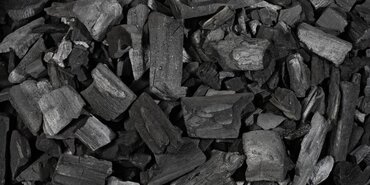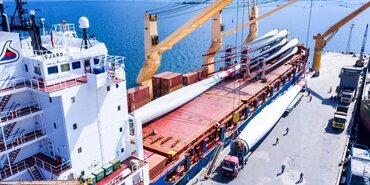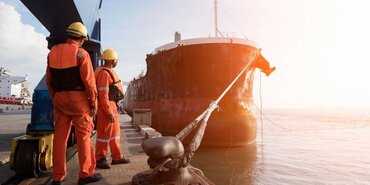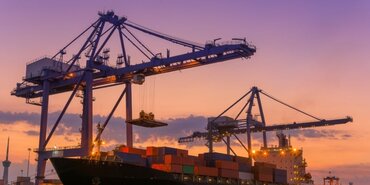TT Talk - Charcoal conundrum

Variations on charcoal have been causing concern. Perhaps it is opportune to improve the safety of people, property and the environment.
Charcoal is a lightweight, black residue, consisting of carbon and any remaining ash, obtained by removing water and other volatile constituents from animal and vegetable substances. Charcoal is usually produced by slow pyrolysis - the heating of wood or other substances in the absence of oxygen.
Historically, it has been used for thousands of years, with the Romans being attributed to making it their fuel of choice and using it in iron production. It has a wide range of uses from metallurgical, as a filtration/purification aid, through to being used in domestic barbeques.
UN classification for charcoal
United Nations (UN) Recommendations on the Transport of Dangerous Goods - Model Regulations have assigned charcoal activated or non-activated to either of the following entries:
- UN1362 CARBON, ACTIVATED or
- UN1361 CARBON animal or vegetable origin
For both entries there are detailed 'Special Provisions' (SP) designed to assist the consignor in correctly classifying the product. For the maritime trade, the International Maritime Dangerous Goods (IMDG) Code is the governing document, applying the Model Regulations as appropriate to the safety and operation differences for this mode of transport.
Thus, SP925 excludes the application of the regulations to:
- non-activated carbon blacks of mineral origin;
- consignments of carbon that pass the tests for self-heating substances as reflected in the UN Manual of Tests and Criteria (section 33.3.1.3.3 see pages 375-377); and
- carbons made by a steam activation process.
Arguably, the most important aspect of SP925 relates to the reference to testing. The full text requires that the consignment is 'accompanied by a certificate from a laboratory accredited by the competent authority, stating that the product to be loaded has been correctly sampled by trained staff from that laboratory and that the sample was correctly tested and has passed the test'. This is emphasised in SP223, which confirms that those substances that on testing do not meet the 'established defining criteria' for one of the dangerous goods classes are not subject to the Regulations.
"Dangerous goods regulations place the responsibility of classifying the goods on the shipper/consignor"
The dangerous goods regulations place the responsibility of classifying the goods on the shipper/consignor. As charcoal is named in the index of the IMDG Code as CARBON, a Class 4.2 type of cargo, there is a presumption that charcoal should be assigned as UN1361 or UN1362 unless the consignor can demonstrate that the goods are not classified in accordance with SP925.
In recent years there have been a number of fires attributed to the carriage of cargoes declared as non-regulated charcoal. These fires have occurred on board ships as well as on land. Inevitably, ship board fires are of grave concern to the industry, not least because of the adjacency risk, where large numbers of containers are located in close proximity. The adequate classification and declaration of this particular cargo may not yet have given rise to a major conflagration, but there have been an increasing number of incidents identified. This has been particularly evidenced from the findings of the liner shipping CINS Organisation initiative. An increasing number of charcoal shipments are being found and recorded, which have not been declared nor had evidence of using the UN Manual of Tests and Criteria for self-heating substances.
Veracity of testing
The issues arising here are further highlighted in the interim report issued by the German Federal Bureau of Maritime Casualty Investigation. The report identifies similar scenarios that gave rise to two separate fires, both involving containerised cargoes of charcoal which had not been declared as dangerous goods. Perhaps confusingly, the investigators tested one of the containers from the same shipment and confirmed that it was indeed not dangerous according to the IMDG Code criteria given in SP925.
Whilst it is recognised that the German report highlights a potential anomaly between the test results obtained when using the appropriate method as set out by the UN, there are other issues which need to be addressed. Charcoal is a 'natural' product and as a consequence there will be batch to batch variation; there is almost certainly insufficient guidance as to the process to determine the efficacy of particular test results. Logically, there are circumstances in which new tests should be undertaken, whether based on elapsed time or other details of the production process, to provide appropriate assurance for all shipments originating from a given consignor.
"Logically, there are circumstances in which new tests should be undertaken, whether based on elapsed time or other details of the production process"
Strengthening the control environment
Furthermore, the producers of charcoal may not be sufficiently familiar with the IMDG Code (or similar national and international dangerous goods regulations) or incorrectly perceive that their product is not classified as dangerous goods - perhaps simply an education process.
Additionally, SP925 requires that Competent Authorities accredit each laboratory carrying out the testing. It would clearly assist both consignors and carriers if the details of such accredited laboratories were published and easily available.
The investigation work by German Federal Bureau is on-going and final findings eagerly awaited. It would seem an ideal opportunity to draw together the disparate aspects involved in the movement of this - and similar - cargo in order to bring about greater clarity of expectation and certainty for safe international transport.
We gratefully acknowledge the assistance in the preparation of this article of Keith Bradley, formerly Hazardous Cargoes Adviser, UK Maritime & Coastguard Agency.
We hope that you have found the above interesting. If you would like further information, or have any comments, please email us, or take this opportunity to forward to any colleagues who you may feel would be interested.
We look forward to hearing from you.
Peregrine Storrs-Fox
Risk Management Director, TT Club
- Author
- Staff Author
- Date
- 10/01/2017





